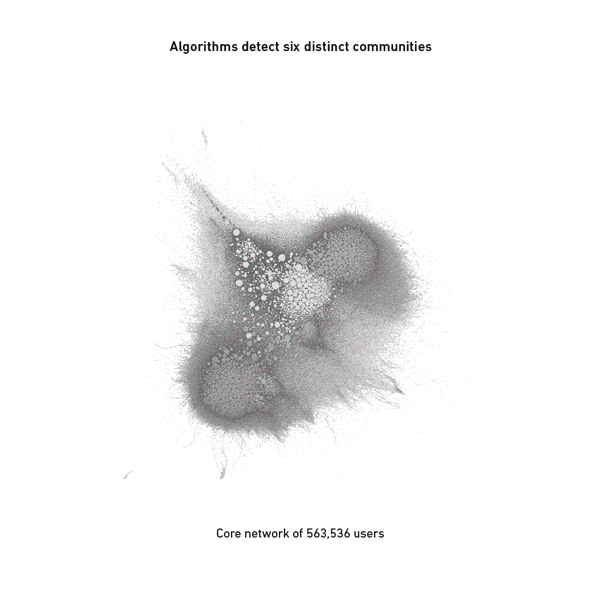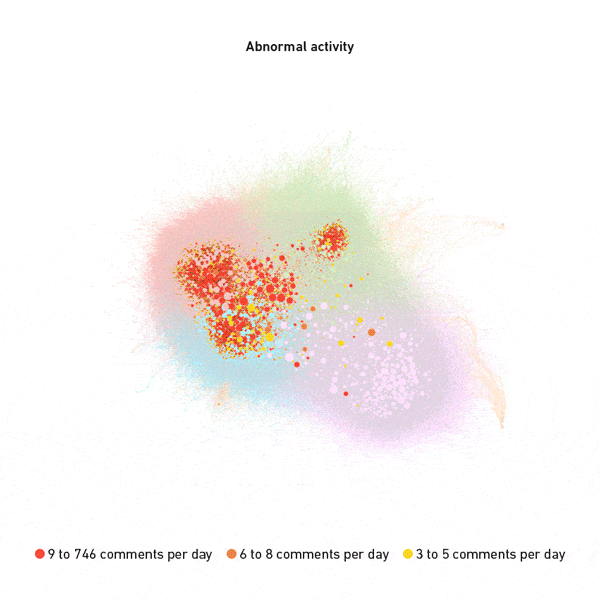In a fast-moving world immersed in new digital realities, the volume, velocity, and variety of the information that we consume have changed the way that we understand the world and each other. Amplified by continuously evolving technologies that have enabled nearly ubiquitous access to the global digital conversation, the dimension of veracity has come into play as a potent factor delineating the public digital debate. What’s true? What’s false? What’s spin? What’s conjecture? What and who can we trust?
There is growing evidence of the increasing importance of social networks, blogs, online news and other forums in the digital space to shape the social and political debate. While there is genuine and legitimate use by many different stakeholders, the public digital sphere debate is also used as a battleground to propagate disinformation that poses real threats to individuals, groups, companies, organizations, societies, and economies. Strategic analysis of the digital public sphere offers an opportunity to identify and monitor disinformation campaigns that seek to disrupt and challenge free and fair information flows in the social debate.
The European Union Parliamentary Elections
Ahead of the European Parliamentary Elections in May 2019, our team is conducting a data analytics project with the goal of understanding the public debate and identifying any abnormal attempts to increase social polarization or radicalization across Europe.
The data analytics project is a pan-European collaboration involving multiple organizations, media companies, and events across Europe. The research incorporates data collected in real-time from mid-December 2018 to May 2019 in France, Germany, Italy, Poland, and Spain. Constella’s data scientists have worked with Constella’s proprietary software, Analyzer, to index and analyze a data lake fed by a diverse range of public data sources including social media, public forums, blogs, digital communities, discussion boards, news, video sites, wiki sites, and others. The real-time data lake for this extensive analytics project consists as of now of more than 4.7 billion data points indexed from over 200 million results and more than 20 million authors. For each of the individual country analyses, the specified volume of results is subject to the context of analysis, that is, to the time period or specific issues researched. Results for each country are extracted in aggregate and analyzed from the general data lake to best reflect the scope of each analysis. Thus, the quantity of data points in the overall data lake is greater than the aggregation of results analyzed per country or issue. The scope of the following country analyses includes:
1. Identifying the main socio-political themes connected with the EU elections and the underlying trends across the digital public conversation.
2. Identifying and analyzing key communities and influencers in the public digital sphere.
3. Analyzing the role of media in supporting key narratives, with the specific goal of detecting outliers and potential disinformation campaigns.
We will be delivering specific country analyses. However, our preliminary analysis has already uncovered three common trends across the key countries analyzed:
1. Narratives: Local, domestic topics of public discussion exist alongside internationally recognizable, pan-European narratives such as Brexit or the Yellow Vests movement.
2. Polarization: In addition to the traditional Right vs. Left dichotomy, culture wars around key issues such as migration, gender and LGBTQ rights, national identity, or the environment play a significant role in fueling polarization of the digital debate.
3. Abnormalities in the Public Debate: So far, our analysis has identified 2 levels of abnormality:
a. Activity: Individuals and groups of authors with abnormally high activity significantly above the average within the analyzed period, cases of non-human behavior such as simultaneous posting across different digital threads or sustained, repetitive diffusion of highly specific messages.
b. Digital Ecosystem: Groups of local or seemingly local sites with distinct elements such as highly segmented editorial strategies fuelling polarizing narratives. Sites with limited or no transparency regarding ownership and authorship, in many cases, crowdfunded or funded by programmatic advertising.
Narratives
By analyzing the top terms used in the public conversation, we note the appearance of both local and pan-European narratives. Cross-border themes characterizing the debate across countries include immigration, Islam, Brexit, and the Yellow Vests, for example. Domestic topics ranging from bullfighting and gender to specific economic, social, and environmental policies appear to co-exist with the more internationally recognizable narratives.


In analyzing top keywords present in the Italian public digital conversation, salient themes include broad, international narratives such as Brexit, Gilets Jaunes, and others that appear alongside themes ranging from domestic economic policy to immigration. See the full analysis here.
Polarization
Polarization and fragmentation of communities and media are characteristic of the communities mapped across all five countries in the study. The below example of the Communities Detection Analysis conducted on the Spanish socio-political debate visually demonstrates the polarized nature of users’ interactions within the digital conversation. Read the full analysis on Spain here.


Abnormal Activity
A range of 0.05%-0.16% of users who are classified as “abnormal activity users” are responsible for a range of 9.55%-11.1% of total activity across all 5 countries, indicating a similar range of high activity users in each country. This means that less than 0.2% of all users generate around up to 11% of the total activity in the public conversation. These abnormal activity users demonstrate a tendency to concentrate around specific media, focusing on a determined set of narratives, as can be seen in the accompanying analyses.


An example of the distribution of abnormal activity users in the French socio-political debate. Read the full analysis on France here.
Would You Like to Know More?
To delve deeper into the findings of our country-specific analyses, click on the links below.
Additionally, see the extensive media publications that reference Alto’s research here.
France: Digital Public Debate Ahead of EU Parliamentary Elections
Germany: Digital Public Debate Ahead of EU Parliamentary Elections
Italy: Digital Public Debate Ahead of EU Parliamentary Elections
Spain: Digital Public Debate Ahead of EU Parliamentary Elections
Poland: Digital Public Debate Ahead of EU Parliamentary Elections
Europe: United Nations Migration Pact – Public Sphere Digital Analysis
Europe: Fact-checker Effectiveness: Do Debunkers Reach the Communities Exposed to Digital Disinformation?
Interested in our work? Please contact us at info@constellaintelligence.com. To learn more about Constella, subscribe to our newsletter below.




